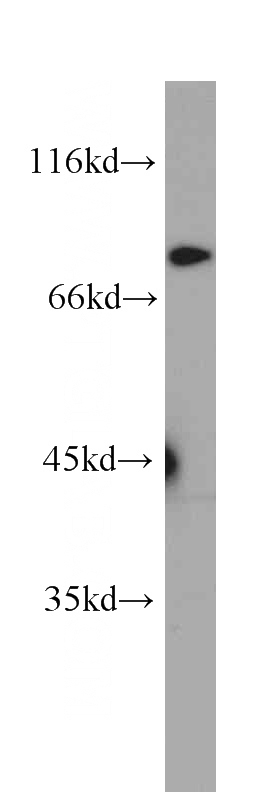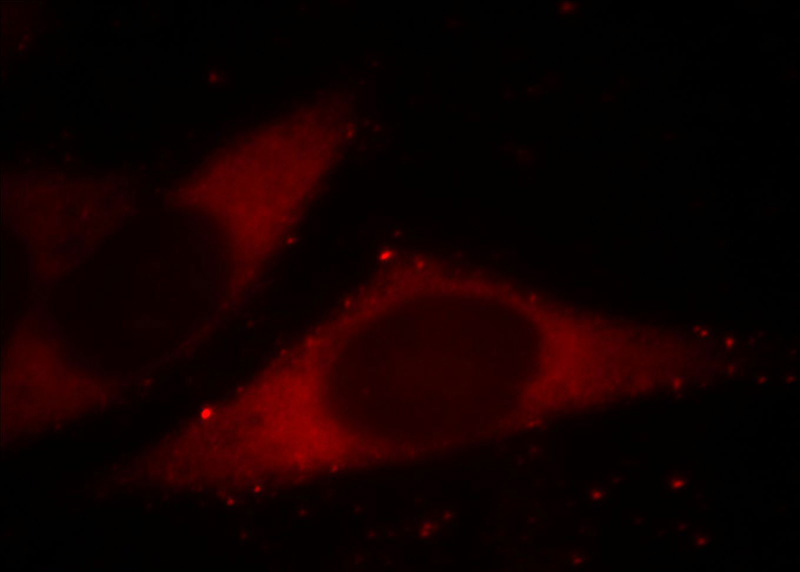-
Product Name
BORIS antibody
- Documents
-
Description
BORIS Mouse Monoclonal antibody. Positive WB detected in Hela cells, SMMC-7721 cells. Positive IF detected in MCF-7 cells, Hela cells. Observed molecular weight by Western-blot: 75kd
-
Tested applications
ELISA, WB, IF
-
Species reactivity
Human, Mouse; other species not tested.
-
Alternative names
BORIS antibody; Cancer/testis antigen 27 antibody; CCCTC binding factor antibody; CT27 antibody; CTCF like protein antibody; CTCF paralog antibody; CTCF T antibody; CTCFL antibody; dJ579F20.2 antibody; Zinc finger protein CTCF T antibody
-
Isotype
Mouse IgG1
-
Preparation
This antibody was obtained by immunization of BORIS recombinant protein (Accession Number: NM_001269040). Purification method: Caprylic acid/ammonium sulfate precipitation.
-
Clonality
Monoclonal
-
Formulation
PBS with 0.1% sodium azide and 50% glycerol pH 7.3.
-
Storage instructions
Store at -20℃. DO NOT ALIQUOT
-
Applications
Recommended Dilution:
WB: 1:500-1:5000
IF: 1:10-1:100
-
Validations

HeLa cells were subjected to SDS PAGE followed by western blot with Catalog No:107020(BORIS antibody) at dilution of 1:1000

Immunofluorescent analysis of MCF-7 cells, using CTCFL antibody Catalog No: at 1:25 dilution and Rhodamine-labeled goat anti-mouse IgG (red).
-
Background
CTCFL, also named BORIS (for brother of the regulator of imprinted sites) is a paralogue of the 11 zinc-finger transcription factor, CTCF. It is predominantly expressed in spermatocytes in the testis, also can be found in tumors and cancer cell lines. It mainly participates in insulator function, nuclear architecture and transcriptional control, which probably acts by recruiting epigenetic chromatin modifiers. It has a key role in gene imprinting in male germline, by participating in the establishment of differential methylation at the IGF2/H19 imprinted control region (ICR). Directly binds the unmethylated H19 ICR and recruits the PRMT7 methyltransferase, leading to methylate histone H4 'Arg-3' to form H4R3sme2.
Related Products / Services
Please note: All products are "FOR RESEARCH USE ONLY AND ARE NOT INTENDED FOR DIAGNOSTIC OR THERAPEUTIC USE"
